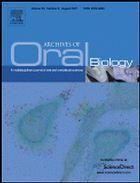
“Earlier studies showed that the expressions of the agonists of the cannabinoid receptors are reduced in the vitreous humor of patients with age-related macular degeneration (AMD), and the cannabinoid type 2 receptor is present in the retinas of rats and monkeys. The purpose of this study was to determine whether the cannabinoid type 2 receptor is involved in the light-induced death of cultured 661W cells, an immortalized murine retinal cell line, and in the light-induced retinal degeneration in mice.
Time-dependent changes in the expression and location of retinal cannabinoid type 2 receptor were determined by Western blot and immunostaining. The cannabinoid type 2 receptor was down-regulated in murine retinae and cone cells. In the in vitro studies, HU-308, a cannabinoidtype 2 receptor agonist, had a protective effect on the light-induced death of 661W cells, and this effect was attenuated by SR144528, a cannabinoid type 2 receptor antagonist.
Because the cannabinoid type 2 receptor is a G-protein coupled receptor and is coupled with Gi/o protein, we investigated the effects of the cAMP-dependent protein kinase (PKA). HU-308 and H89, a PKA inhibitor, deactivated PKA in retinal cone cells, and H89 also suppressed light-induced cell death. For the in vivo studies, a cannabinoid type 2 receptor agonist, HU-308, or an antagonist, SR144528, was injected intravitreally into mouse eyes before the light exposure. Electroretinography was used to determine the physiological status of the retinas. Injection of HU-308 improved the a- and b-waves of the ERGs and also the thickness of the outer nuclear layer of the murine retina after light exposure.
These findings indicate that the cannabinoid type 2 receptor is involved in the light-induced retinal damage through PKA signaling. Thus, activation of cannabinoidtype 2 receptor may be a therapeutic approach for light-associated retinal diseases.”
https://www.ncbi.nlm.nih.gov/pubmed/29133122
http://www.sciencedirect.com/science/article/pii/S0014483516304456?via%3Dihub






 “Ischemia-reperfusion injury (IRI) is a common cause of acute kidney injury (AKI), which is an increasing problem in the clinic and has been associated with increased rates of mortality. Currently, therapies to treat AKI are not available, so identification of new targets which, upon diagnosis of AKI, can be modulated to ameliorate renal damage is essential.
“Ischemia-reperfusion injury (IRI) is a common cause of acute kidney injury (AKI), which is an increasing problem in the clinic and has been associated with increased rates of mortality. Currently, therapies to treat AKI are not available, so identification of new targets which, upon diagnosis of AKI, can be modulated to ameliorate renal damage is essential.


